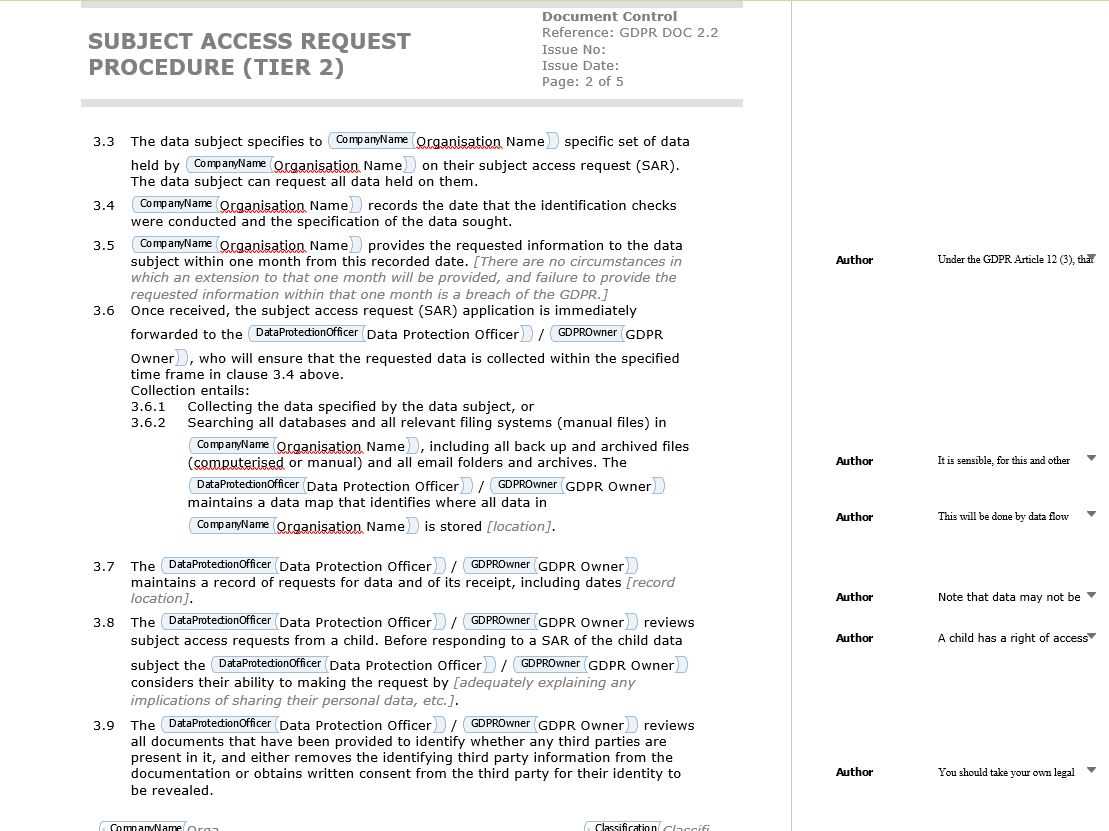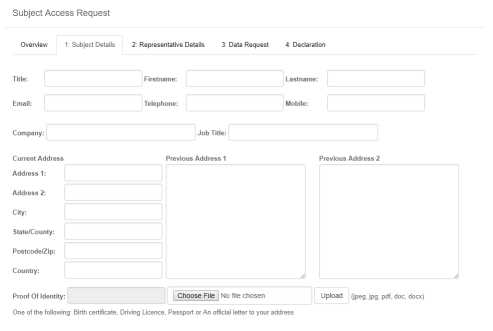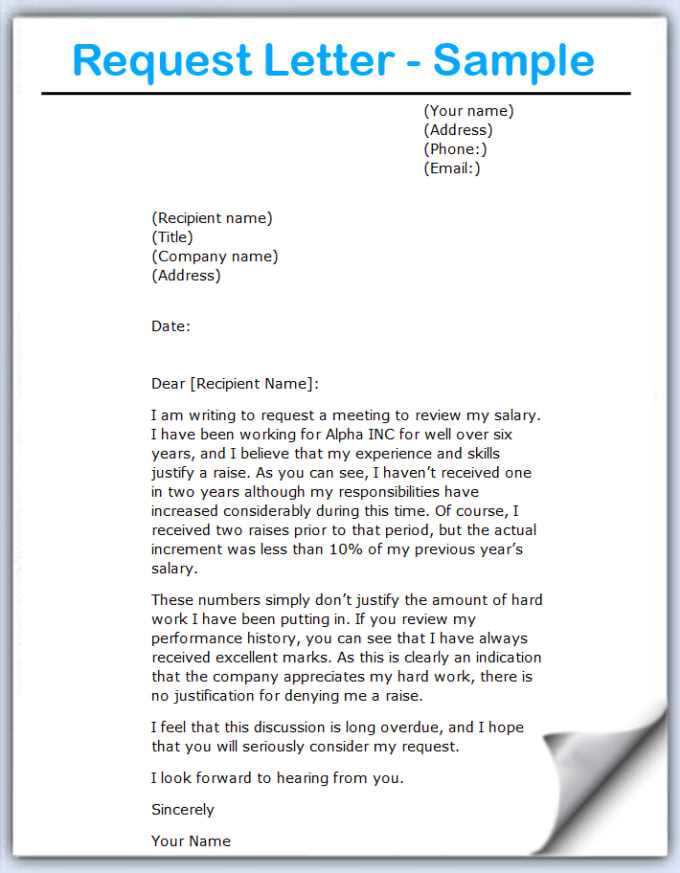Subject Access Request Template Letter Guide

When it comes to gaining insight into the information companies hold about you, it’s important to know how to formally ask for it. This process ensures that your privacy rights are respected and your data is shared transparently. Knowing how to effectively make such a formal inquiry can help you access crucial details about the data organizations store and process.
To facilitate this, it’s beneficial to use a clear and concise document that outlines your intention and the specific data you’re requesting. A well-structured approach increases the likelihood that your inquiry will be processed smoothly and within the legal timeframe.
In this guide, we’ll explore how to draft such a document, including the necessary components and helpful tips to avoid common errors. By following these steps, you can ensure that your request is both legally compliant and easy for the recipient to handle.
Understanding Subject Access Requests
Knowing your rights to obtain personal information stored by organizations is essential in today’s data-driven world. These rights allow individuals to ask companies for details about the data they hold, how it’s used, and who it’s shared with. Such inquiries help ensure transparency and empower individuals to take control of their private information.
Legal Framework Behind Personal Data Inquiries
The ability to retrieve personal data is protected by law, particularly under privacy regulations such as the General Data Protection Regulation (GDPR) in Europe. These laws grant individuals the right to inquire about the data organizations have collected, how it’s processed, and the purpose behind its use. By using formal channels to request this information, individuals ensure they are informed and that organizations comply with legal standards.
How This Process Benefits Individuals
Making a formal inquiry about personal data offers several benefits. It allows individuals to assess whether their information is accurate, ensure it’s being used appropriately, and address any issues such as incorrect or outdated data. Furthermore, this process helps protect against misuse and enhances personal data security. With a clear understanding of what data is held, individuals can make informed decisions about their privacy and security.
Why You Need a Template Letter
When making an official inquiry about the personal information held by an organization, having a structured document is crucial. A well-crafted format helps convey your request clearly and ensures that all necessary details are included. Without a clear framework, important elements might be overlooked, which could delay or even prevent the proper handling of your inquiry.
Ensuring Clarity and Compliance

Using a standardized format guarantees that your communication is easy to understand and legally sound. A clear, concise structure prevents confusion, ensuring that the recipient understands exactly what you’re asking for. Additionally, it ensures your inquiry complies with relevant regulations, which can prevent misunderstandings or potential rejections of your request.
Simplifying the Process

A well-designed format not only saves time but also makes the process of gathering personal data more efficient. It allows you to focus on the specifics of your information needs, rather than worrying about how to structure your inquiry. With all the necessary components included, the organization can more easily process your request in a timely manner, reducing delays and increasing the chances of receiving accurate information.
Key Elements of a Subject Access Request
When inquiring about the personal data held by an organization, it’s essential to include all the relevant details to ensure your inquiry is properly understood and processed. A well-constructed communication must clearly express the specific information being requested and any other important aspects to facilitate the response. Key components help avoid confusion and guarantee the request is handled promptly and in compliance with regulations.
Essential Information to Include
Begin by providing your full name, contact information, and any identifying details that will help the organization locate your records. Additionally, specify the exact type of data you’re seeking and the timeframe in which it was collected or used. Clearly state your purpose for the inquiry, as this will assist the organization in understanding the context of your request.
Legal Considerations and Formal Tone
Ensure that the communication maintains a formal and respectful tone, as this reflects the seriousness of your inquiry. It’s also important to reference any applicable legal rights or frameworks that entitle you to receive the information, such as GDPR or other privacy laws. This reinforces the legitimacy of your request and helps to establish your right to the requested data.
How to Structure Your Letter
When drafting a formal inquiry about the personal data held by an organization, it is crucial to follow a clear and logical structure. A well-organized document ensures that your message is easily understood and allows the recipient to process it efficiently. The right format also ensures that all necessary information is included, reducing the likelihood of delays or confusion.
Introduction and Identification

Start by introducing yourself and clearly identifying your personal information, such as your full name, contact details, and any reference number that the organization may have assigned to you. This will help the recipient locate your data quickly. Be sure to state the purpose of your inquiry early on, so the recipient understands the context of your request right away.
Details of the Information Needed
Be specific about the kind of data you want to obtain. Outline any relevant timeframes, categories of information, or specific documents you’re requesting. The more detailed you are, the easier it will be for the organization to understand your needs and respond accurately. Conclude by providing any supporting information they may require to fulfill your inquiry.
What to Include in Your Request

When making an official inquiry about the personal data an organization holds, it’s essential to include all the necessary details to ensure the process runs smoothly. A well-prepared communication should contain specific information to help the recipient understand your needs and respond promptly. Leaving out key elements could lead to delays or the inability to fulfill your inquiry properly.
Key Information to Provide
To make your inquiry as clear and actionable as possible, consider including the following details:
| Item | Description |
|---|---|
| Your Full Name | Your full name as it appears in the organization’s records. |
| Contact Information | Phone number, email address, and any other relevant contact details. |
| Relevant Dates | Specific periods during which you believe the data was collected or used. |
| Type of Information | Details of the data you are requesting (e.g., emails, records, reports). |
Additional Information to Consider
If applicable, include any reference numbers, case identifiers, or previous correspondence that can help the organization track your request. If the inquiry is urgent, you may want to mention a preferred timeline for receiving a response. This ensures that your communication is efficient and clear, aiding the organization in addressing your inquiry promptly.
Common Mistakes to Avoid
When making a formal inquiry about the personal data held by an organization, certain errors can hinder the process or cause unnecessary delays. It is essential to be aware of common pitfalls that can complicate the inquiry or lead to a rejected submission. By avoiding these mistakes, you ensure that your communication is clear, professional, and efficient.
Frequent Errors to Watch Out For

- Vague or Unclear Language: Avoid being too general about the data you need. Specificity is key.
- Missing Contact Details: Ensure you provide up-to-date and complete contact information to avoid confusion.
- Omitting Relevant Identifiers: Failing to include reference numbers or other identifiers can slow down the process.
- Unclear Timeline: Not specifying a preferred timeframe for the response can cause delays.
Additional Mistakes to Consider
- Ignoring Legal Rights: Not mentioning your legal rights or the framework under which you are requesting the information could weaken your inquiry.
- Failure to Proofread: Small errors in grammar or structure can make your request harder to understand.
- Missing Signatures or Dates: Always remember to sign and date your document to maintain its authenticity.